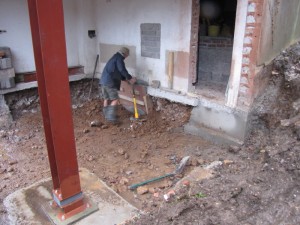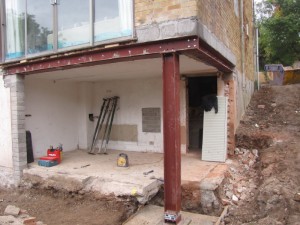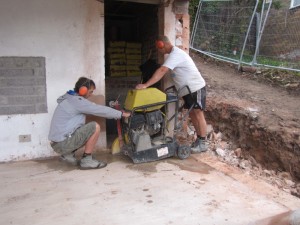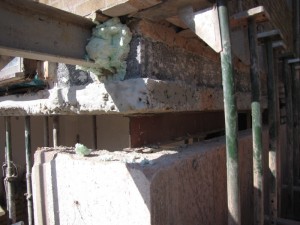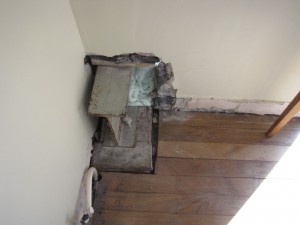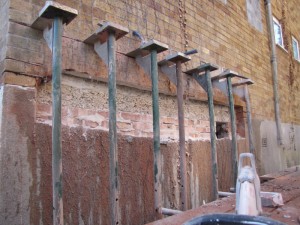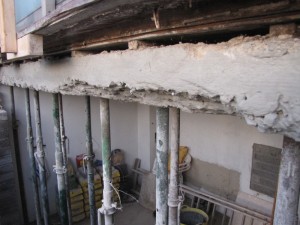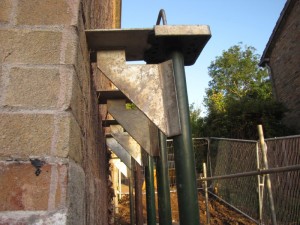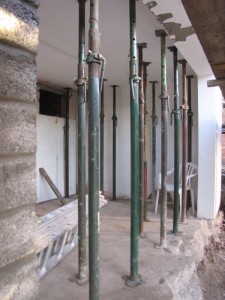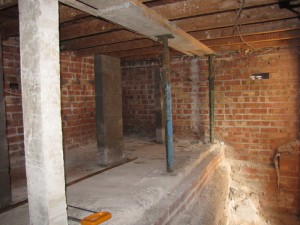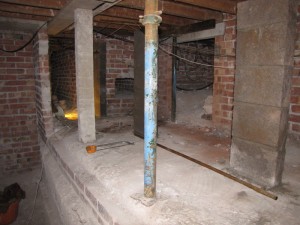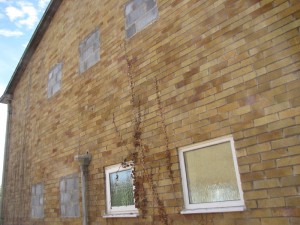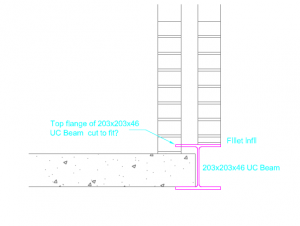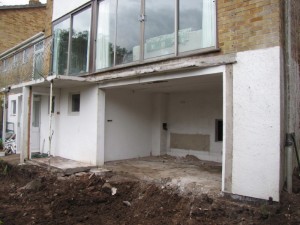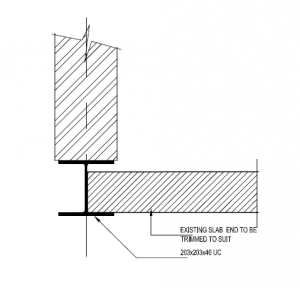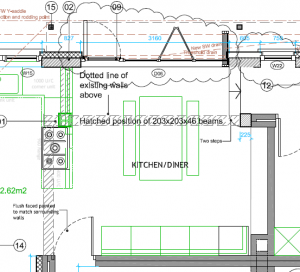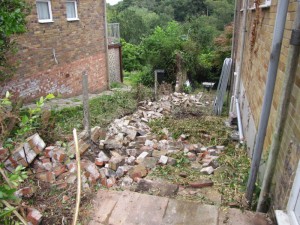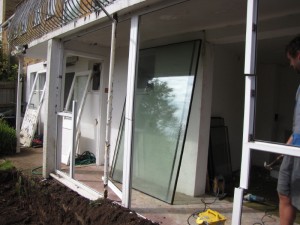After the slab is removed and the earth excavated to the right level, the underpinning of the walls can commence. The photo above shows the first corner section of underpinning complete. Each section is approximately 1200mm long and is cast in alternate sequences. The photo shows the form-work for the second section being removed, the third and fourth sections (either side of the second) can be cast in one sequence, as per the structural engineer’s details.
The underpinning will continue along the internal side wall (behind the column in the photo) and progressively along the external side wall (far right in photo) in tandem with the excavation along the wall. Let’s hope for good weather!

